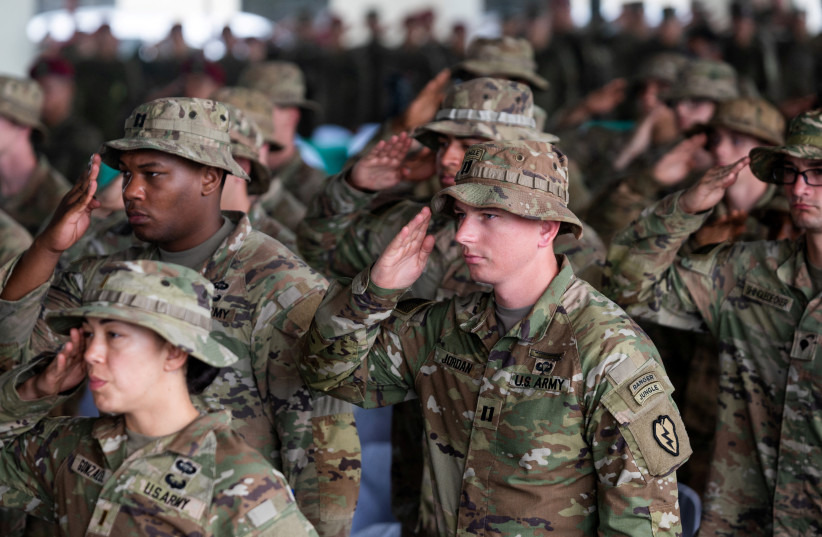It started with “mere” airdrops.
But when will there be actual US boots on the ground in Gaza?
Everything is being framed in terms of humanitarian aid, but US air force assets entered Gaza air space not just once but repeatedly, carrying out significant operations to supply food and medicine.
That part of the US physical entrance into Gaza seemed more coordinated between Washington and Jerusalem.
Then suddenly, last Thursday, US President Joe Biden announced that the US would also supply maritime aid to Gaza, including building a makeshift artificial port off the coast.
This already imposes a long-term US military footprint in Israeli-Gaza territorial waters rather than a “mere” series of fly-throughs.
And it was truly sudden for Israel.
Israel blindsided by US plans?
While The Jerusalem Post’s Tovah Lazaroff has exclusively reported that Prime Minister Benjamin Netanyahu has been raising the idea for months, at least four important Israeli defense sources had no idea this was coming.
It took several hours for any of the sources to provide basic details about what the US meant by building a new “port”—which turned out to be a makeshift floating artificial port.
Even this week, the sources somewhat angrily pushed back against questions about the moment at which they learned of the US decision.
Also, while the IDF recently provided a briefing on a wide range of humanitarian issues, it still had little data to provide about the new maritime initiative (which is separate from the UAE initiative, which has already started).
This means that even if Netanyahu knew this was in the works, all or most of Israel’s defense establishment did not, and that, to some extent, this was an initiative that Biden unilaterally foisted onto Israel.
As of now, all of the Israeli defense sources who did not know this US maritime aid plan was on the way are insisting that they have been promised by America that US troops will merely deliver the aid and then go, with no US troops remaining on the ground in Gaza.
But Israel also promised to be done the intense stage of the war in January, and the US also promised to support whatever Jerusalem would need to do to dismantle Hamas. Acknowledging complex unforeseen realities and developments, neither side has fully kept those promises.
Sights set on Rafah
So what happens if it looks like Israel is going to invade Rafah and Biden has said it can’t?
Or if some other disagreement arises about an Israeli military action.
How hard would it be for a small complement of US Marines accompanying the aid deliveries to travel a kilometer or so into Gaza and to place themselves squarely in the middle of where Israel does not want them?
It is one thing for Israel to order Palestinians and global human rights NGOs to evacuate an area or face potentially being swept up in an attack.
It is quite another thing to tell that to Biden, who provides Israel weaponry, funds, diplomatic support, and general backing to deter Iranian proxies from inflaming other fronts beyond a certain point and is one of the keys to any “Day After” plans for managing Gaza down the line.
Moreover, US forces have been and are already on the ground.
US generals and counter-terror experts have been in and out of Israel since the start of the war, including visits to Gaza.
There are also a variety of US military personnel regularly in Israel on military and intelligence exchange programs.
US attempts to reform the PA
Speaking of intelligence, multiple times when a decision was made to try to improve and reform the Palestinian Authority security forces, it was the CIA and US special forces who came to the West Bank and Gaza to help train and prepare these forces.
It seems quite likely that the Jewish state, at some point, will ask Washington to perform the same service again in Gaza.

And what happens if America wants to move an initiative forward to train a new Palestinian Gaza security force, which is separate from Hamas, at a faster speed than when Israel wants this to start?
If the US sends forces in by air or by sea, is Israel really going to stop them?
All of this is the narrow version of US boots on the ground in Gaza.
A broader version could involve a US-led peacekeeping force handling internal Gaza security for an indefinite period until enough Gazan Palestinians disconnected from Hamas can be convinced that taking on this role will not lead to them being slaughtered later by a resurgent Hamas.
From this perspective, the question about US forces on the ground in Gaza seems less of an if than it does a when, how many, and under more or less coordinated circumstances with Israel.
For better or worse, the Biden administration took significant ownership of the direction of this war from the perspective of many Americans by backing Israel so publicly and with so much offensive weaponry through the early months.
Israelis should likely prepare for the ultimate consequences of what US intervention may look like if the major differences between Jerusalem and Washington over the course of the war, aid, and the Day After are not resolved sooner than later.
